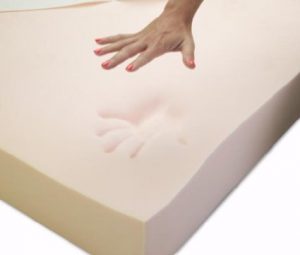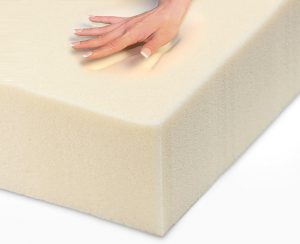Memory foam mattresses are no longer exclusive to NASA spaceships and have become more or less a household item in every urban home; you now have some new considerations to factor into your hunt for the ideal mattress. Compared to latex, they have not only become cheaper but also come with various innovative design features to cut a niche in a quickly growing market. One of the key considerations will be the density of the polyurethane foam: should you buy a low density, medium density or high density memory foam mattress?
The Basics of Memory Foam Densities
The density of memory foam is the measure of the weight for every cubic measure, thus pounds per cubic foot. The varying density further affects the longevity, cushioning and support of the mattress, and so does it vary the costing price. One key difference between regular mattress foam and memory foam mattresses is in the initial contact, whereby the regular foam gives in easier and compresses faster thereby feeling softer. On the other hand, memory foam typically feels stiff right from the initial contact but gradually contorts to the body in contact but it won’t feel as yielding as a regular foam mattress.
Low Density Memory Foam Mattresses
Any memory foam that is 3 pounds per cubic foot or lower is classified as low density. It is the cheapest of all the density options and stands as the softest. Hence it follows that for anyone not looking to invest too much, instead of settling for a regular foam mattress which is the cheapest of all foams, a low density memory foam will come in handy and suffice on a shy budget. The only downside is that you should not expect to outlast any of the other densities and neither will you enjoy the superior support of medium and high density memory foam mattresses compared to low density memory foam.

(Image Credits: Ebay.com)
Medium Density Memory Foam Mattresses
Memory foam that weights in between 4-5 pounds per cubic foot is classified as medium density. Interestingly, this is the most popular memory foam density as it is an ideal balance between support, comfort, plush softness, and ultimately, costing price. Medium density polyurethane is stiffer than low density memory foam and offers greater support. However, it is softer and offers lower support levels compared to high density memory foam. For anyone trying a memory foam mattress for the first time, a medium density polyurethane mattress is the safest bet on a reasonably decent budget as it is an optimal choice for comfort and support (stiffness) versus cost.

High Density Memory Foam Mattresses
Any polyurethane foam that is 6 pounds per cubic foot or higher is classified as high density memory foam. It is greatly appreciated for its superior support as it is the stiffest memory foam and the most durable for the very same reason, thereby giving most value for money with regards to longevity and service lifetime. More specifically, high density memory foam mattresses easily last longer than 7 years and can clock a whooping 12 years without demeaning the quality of your sleep or compromising on the quality of support for spinal alignment and body pressure points.
(Image Credits: BikeWritersCollective.com)
For anyone suffering from back problems, spinal injury and poor posture, a high density memory foam mattress will offer the best back, neck, shoulders and spinal support and alignment compared to any other polyurethane mattress density. Learn more at Bedroom Solutions!

